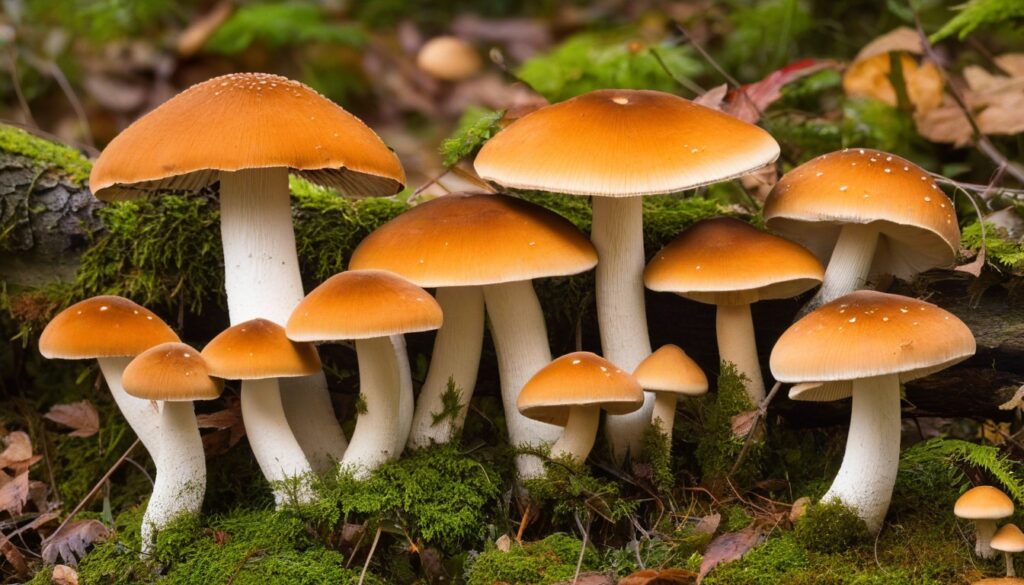If you’re looking for a unique culinary experience, look no further than the world of edible mushrooms in Western North Carolina. The region is home to a diverse range of delicious fungi waiting to be discovered and savored. With our expert foraging guide, you’ll learn how to identify and safely enjoy some of the most popular varieties found in the area.
Key Takeaways:
- Discover a diverse range of edible mushrooms in Western North Carolina
- Learn how to forage for mushrooms safely and ethically
- Identify common types of edible mushrooms and differentiate them from toxic varieties
- Explore unique wild mushroom recipes that showcase the flavors of the region
- Understand the importance of sustainable foraging practices to preserve mushroom habitats
The Fascinating World of Edible Mushrooms
Edible mushrooms are an intriguing and diverse group of organisms that play a vital role in various ecosystems. These fascinating fungi have evolved specialized features to thrive in different habitats, from decomposing fallen trees to living symbiotically with other plants.
Aside from their ecological importance, edible mushrooms have long been valued for their culinary uses and cultural significance. Different cultures around the world have incorporated mushrooms into their traditional cuisines, from the umami-rich shiitake in Japan to the prized truffles in Europe.
Did you know?
The largest living organism in the world is a mycelium network of honey fungus in Oregon, covering an area of 2,200 acres!
Despite their alluring appeal, edible mushrooms can also be deadly if consumed without proper identification. That’s why it’s essential to learn about the different types of mushrooms and their unique characteristics before foraging for them.
In the following sections, we will delve deeper into the world of edible mushrooms, exploring their diverse range and learning how to safely and sustainably enjoy them in Western North Carolina.
Mushroom Foraging in Western North Carolina
If you’re looking to forage for mushrooms in Western North Carolina, it’s important to know the best locations and seasons. Some of the top spots include the Great Smoky Mountains National Park, Pisgah National Forest, and the Blue Ridge Parkway. Mushroom foraging in these areas is best during the spring and fall seasons when the temperatures are cool and moist.
Best Terrain for Mushroom Foraging
The type of terrain is also important to consider. Look for wooded areas with a mix of deciduous and coniferous trees, and avoid areas that have been heavily treated with pesticides or fertilizers. Mushrooms typically grow in moist, shaded areas, so keep an eye out for patches of damp soil and decomposing plant matter.
What Mushrooms Can You Expect to Find?
Western North Carolina is home to a variety of edible mushrooms, including chanterelles, morels, and black trumpets. Other common varieties include chicken of the woods, oyster mushrooms, and hedgehogs. It’s important to properly identify mushrooms to avoid any poisonous varieties.
Safety Tips for Mushroom Foraging
Before setting out on a mushroom foraging adventure, make sure to educate yourself on safety precautions. Bring a field guide or consult with an experienced forager to ensure that you are identifying mushrooms correctly. Always carry a basket or breathable bag to allow mushrooms to release their spores and help with future growth. And finally, as a rule of thumb, never consume any wild mushroom unless you’re absolutely certain of its identification.
Common Edible Mushrooms in Western North Carolina
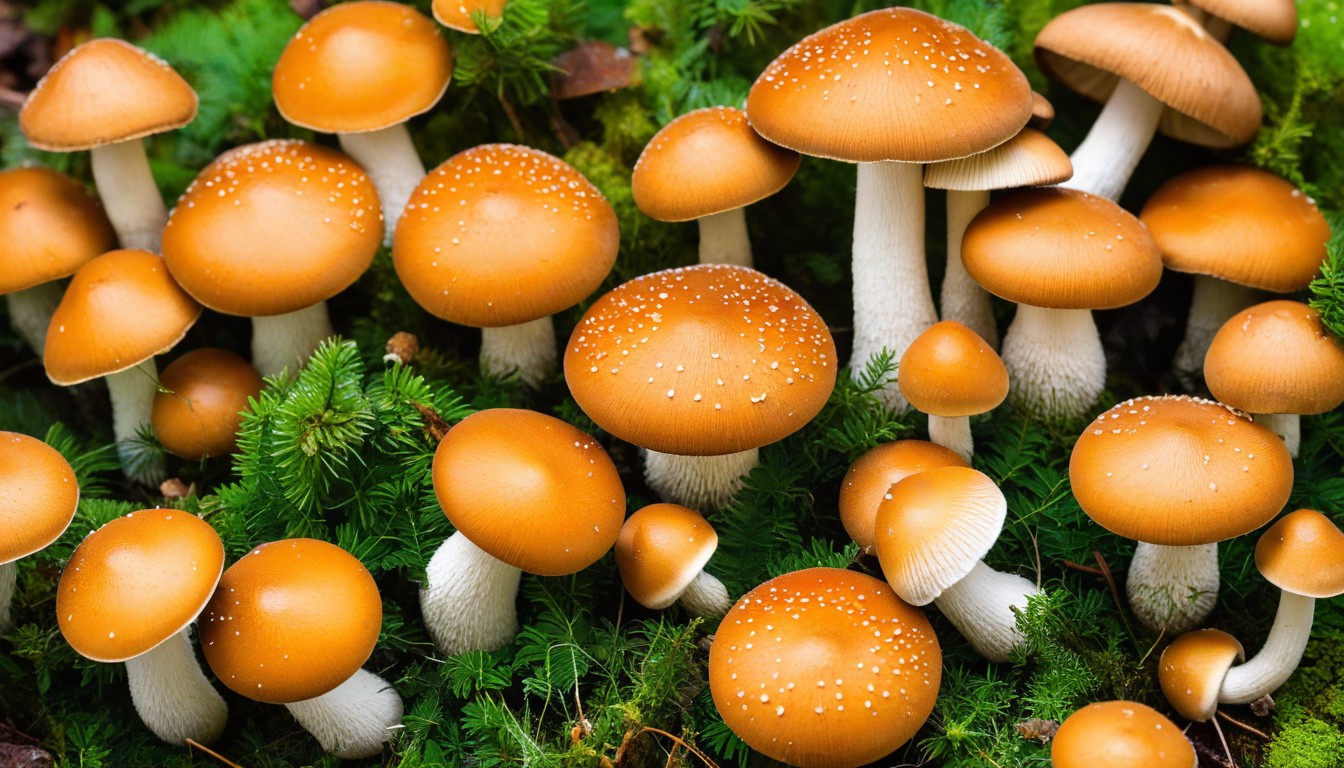
Exploring the diverse world of edible mushrooms in Western North Carolina can be truly rewarding, but before embarking on your foraging journey, it’s important to learn about the most common types of mushrooms found in the area. Here are some of the most frequently encountered edible mushrooms in Western North Carolina:
Type of Mushroom | Appearance | Characteristics |
|---|---|---|
Chanterelles | Cantharellus cibarius | Bright orange-yellow color, wavy cap, thick stem |
Morels | Morchella spp. | Honeycomb-like cap, hollow stem, earthy flavor |
Oyster Mushrooms | Pleurotus ostreatus | Flat, oyster-shaped cap, white to gray-brown color, delicate flavor |
Lion’s Mane | Hericium erinaceus | White, shaggy appearance, no cap or stem, seafood-like flavor |
Hen of the Woods | Grifola frondosa | Cluster of fan-shaped caps, gray-brown color, meaty texture |
Although these are some of the most common edible mushrooms in Western North Carolina, it’s essential to properly identify each species before consuming them. Always ensure you are confident in your identification and consult a trusted expert or guide to help you if needed.
Harvesting and Preparation Tips
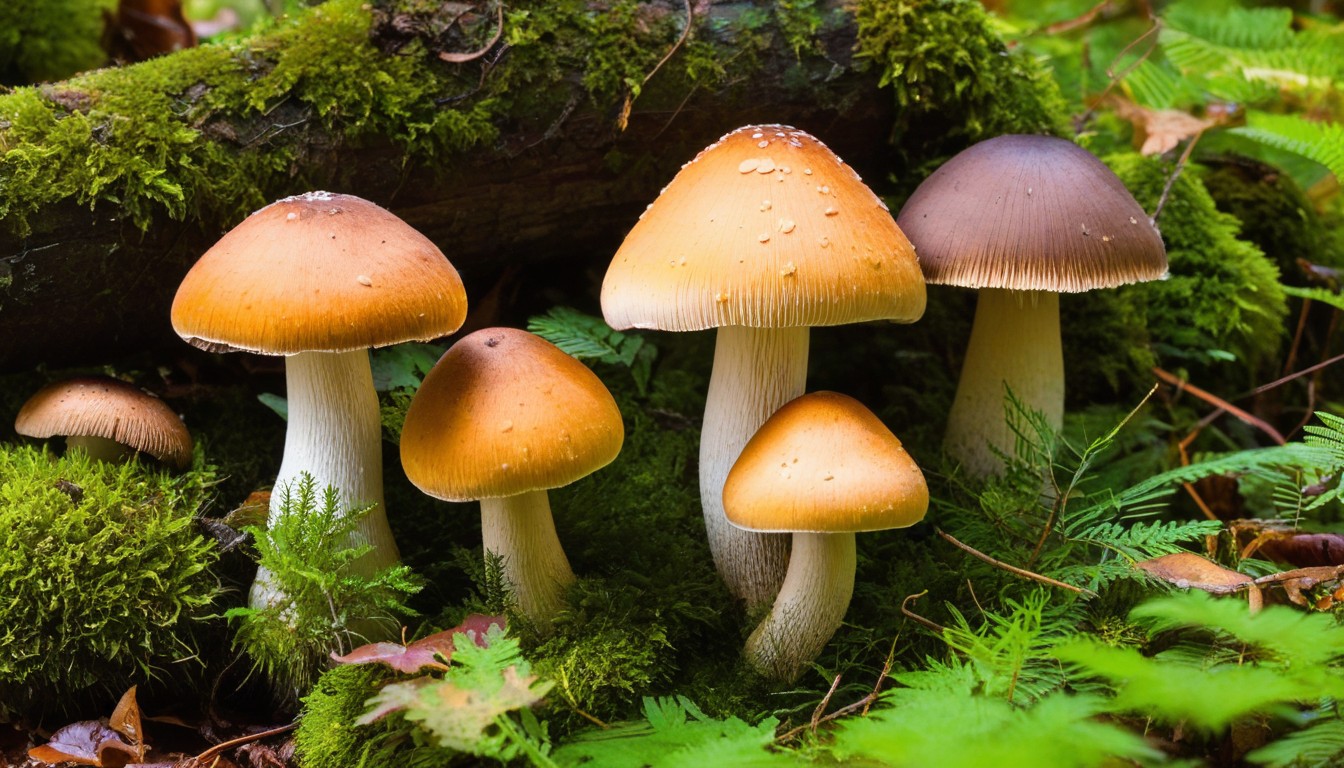
When harvesting edible mushrooms, it’s important to ensure that you are taking the correct type of fungi. Always double-check your identification before harvesting. If you’re unsure, seek the advice of an experienced forager or mycologist.
Here are a few essential tips for harvesting:
- Use a sharp blade or mushroom knife to cut the stem close to the cap. Avoid pulling the mushroom out by its stem, as this can damage the mycelium and prevent future growth.
- Carry a basket or mesh bag to allow the spores to fall and spread, promoting the growth of new mushrooms in the area.
- Never pick all the mushrooms in a given area. Leave some for other foragers and to allow the fungi to continue producing spores and supporting the ecosystem.
Once you’ve harvested your mushrooms, it’s time to prepare them for consumption. The method of preparation will depend on the variety of mushroom and your personal taste. Here are a few general tips for preparing edible mushrooms:
- Clean your mushrooms thoroughly to remove any dirt or debris. Some species may require peeling or removing the gills or stems.
- Sautéing or grilling mushrooms can help bring out their natural flavor and texture. Avoid boiling them, as this can lead to a mushy consistency and loss of flavor.
- Pair mushrooms with complementary flavors and ingredients for a delicious and well-balanced dish.
By following these tips, you can ensure a safe and enjoyable mushroom foraging experience and create delicious dishes to savor.
Unique Wild Mushroom Recipes
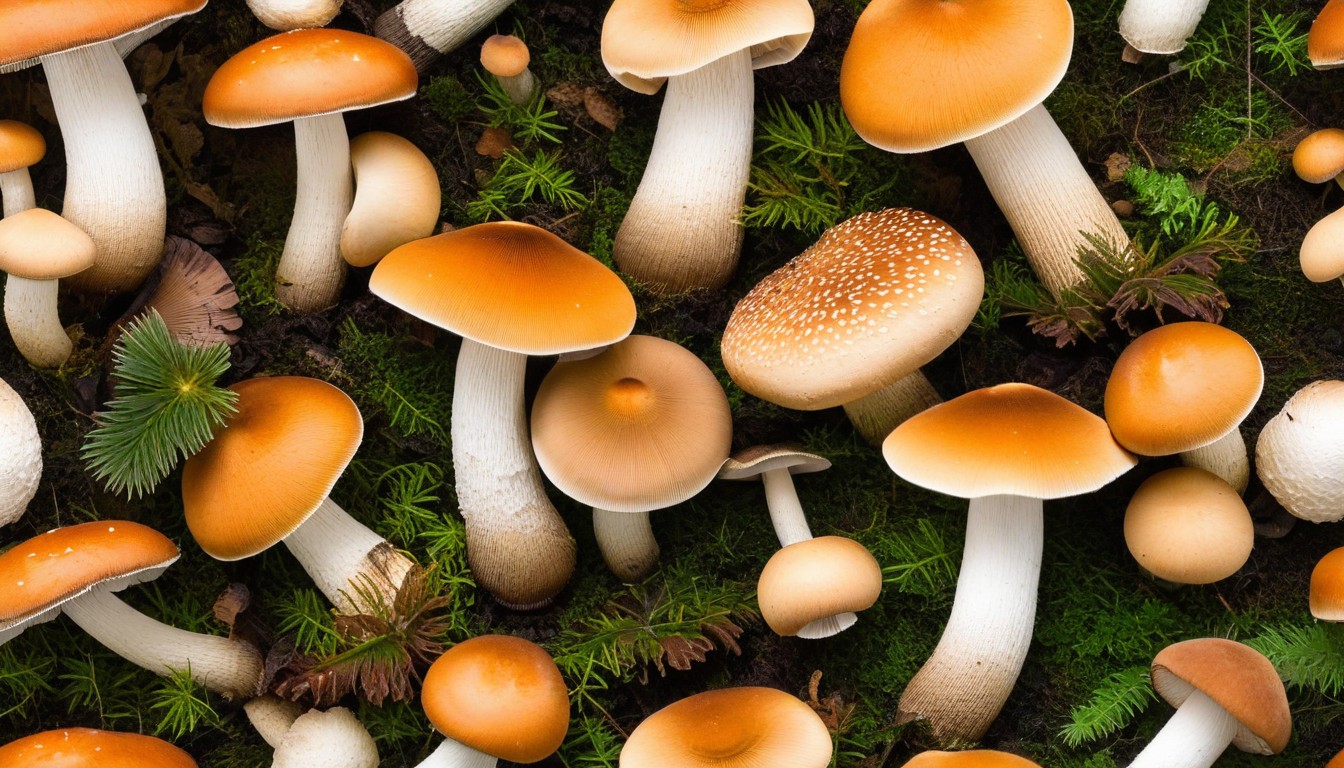
Take your taste buds on a journey with these unique and flavorful wild mushroom recipes that highlight the best flavors Western North Carolina has to offer. From appetizers to main courses, these recipes are sure to impress your guests and leave them wanting more.
Mushroom Tartlets
“These mushroom tartlets are perfect for a dinner party or a special occasion. They are easy to make and packed with flavor.”
– Chef John Smith
Ingredients: | Instructions: |
|---|---|
|
|
Wild Mushroom Risotto
“This wild mushroom risotto is the perfect comfort food for a cozy night in. The deep, rich flavors will warm you up from the inside out.”
– Chef Jane Walker
Ingredients: | Instructions: |
|---|---|
|
|
These unique wild mushroom recipes are just the beginning of the culinary journey you can embark on through Western North Carolina’s fungi offerings. Get creative in the kitchen and experiment with different varieties to create your own delicious dishes.
Safety Precautions and Mushroom Poisoning
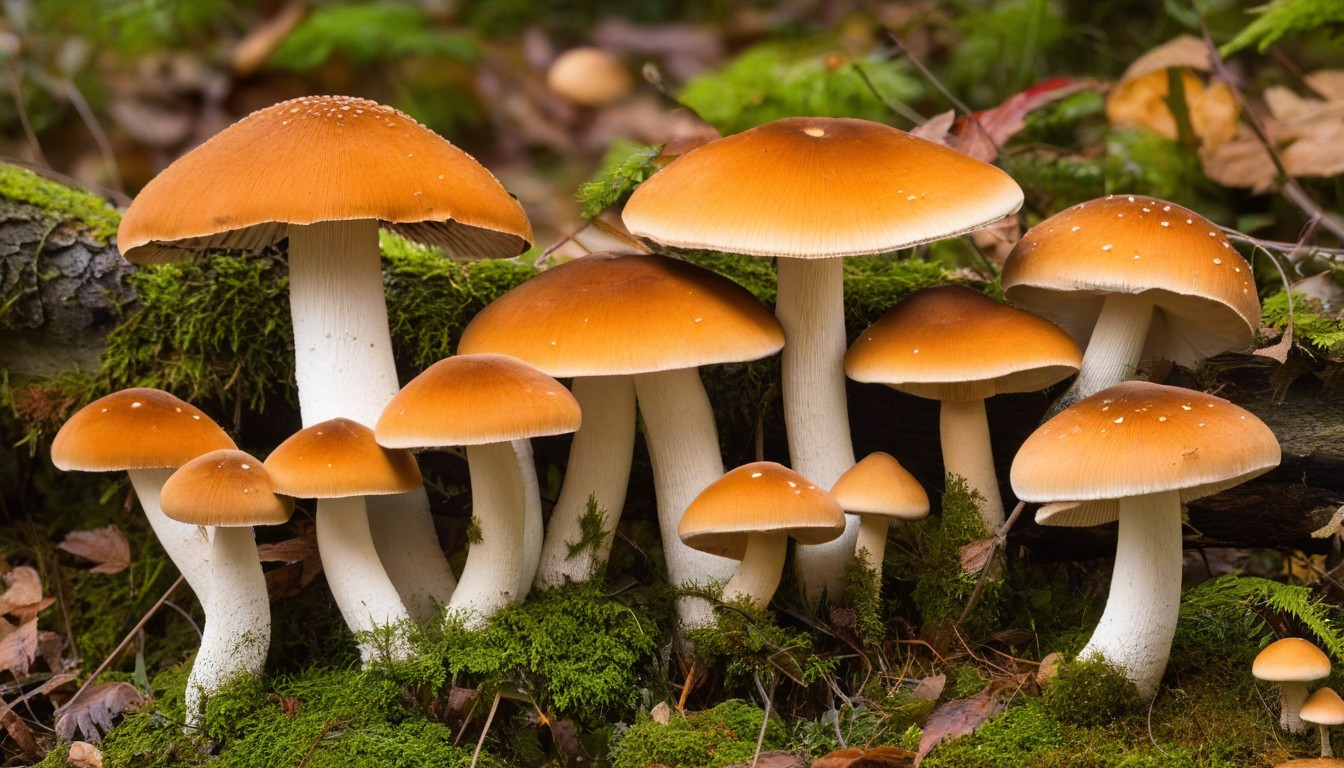
When it comes to foraging for mushrooms, it’s essential to prioritize safety. While many varieties of mushrooms are harmless and delicious, some species are poisonous and can cause severe illness or even death. To ensure a safe and enjoyable foraging experience, familiarize yourself with recommended safety precautions and be able to recognize signs of mushroom poisoning.
Potential Risks
Mushroom foraging comes with several potential risks, including:
- Accidentally consuming poisonous mushrooms
- Encountering hazardous terrain or wildlife while foraging
- Not being able to recognize certain types of mushrooms, leading to mistaken identity and accidental consumption of poisonous species
To minimize these risks, it’s crucial to arm yourself with knowledge and take necessary precautions.
Mushroom Poisoning Symptoms
If you suspect that you or someone you know has consumed a poisonous mushroom, it’s important to seek medical attention immediately. Common symptoms of mushroom poisoning include:
- Abdominal pain
- Nausea and vomiting
- Diarrhea
- Headaches and dizziness
- Difficulty breathing
- Seizures
The severity and onset of symptoms can vary, depending on the type of mushroom consumed. Some symptoms may not appear for several hours after ingestion, making it difficult to identify the source of the illness.
Essential Precautions
To ensure a safe and enjoyable foraging experience, consider the following precautions:
- Always forage with a knowledgeable guide, or thoroughly research recommended safety practices before going on a foraging trip
- Carry a mushroom identification guide and only consume mushrooms that you can positively identify as safe and edible
- Do not harvest mushrooms in areas that may have been exposed to pollution or other contaminants
- Avoid consuming any mushrooms that have a strong odor or unusual appearance, even if they are identified as edible
- Start by consuming a small portion of any new mushroom type to ensure that you do not experience an adverse reaction
- Be conscious of your impact on the environment and avoid over-harvesting
By following these precautions and familiarizing yourself with the signs of mushroom poisoning, you can safely and responsibly enjoy the unique flavors of foraged mushrooms.
Ethical Foraging and Sustainability
Foraging for mushrooms in Western North Carolina can be a fun and rewarding experience, but it’s important to practice ethical foraging to ensure the sustainable use and preservation of mushroom habitats. Ethical foraging involves adhering to principles that prioritize the long-term health and well-being of ecosystems and the environment.
Harvesting mushrooms in a sustainable way means taking only what you need and leaving the rest for future growth and reproduction. It’s essential to avoid damaging the environment and respect private property and protected areas. Help preserve the natural ecosystem by staying on designated trails and avoiding trampling delicate vegetation.
The use of pesticides and herbicides can also harm mushroom habitats, so it’s important to use chemical-free practices when foraging. Lastly, always follow local regulations and guidelines when foraging for mushrooms in Western North Carolina.
Conclusion
Exploring the world of edible mushrooms in Western North Carolina is a fascinating and rewarding experience that connects you with nature and highlights the wealth of local ingredients available in your community. With the help of our expert foraging guide, you can safely and confidently embark on this culinary adventure.
Remember to always prioritize safety when foraging, and follow ethical and sustainable practices to protect the environment. By respecting the delicate balance of ecosystems, you can continue to enjoy the flavors and benefits of wild mushrooms for years to come.
So why not gather your friends and family and head out into the woods to discover the unique flavors of Western North Carolina’s edible mushrooms? With our guide by your side, you’re sure to have a memorable and delicious experience.
FAQ
What are edible mushrooms?
Edible mushrooms are safe and suitable for consumption. They can be cooked and enjoyed in various culinary dishes.
Are all mushrooms in Western North Carolina edible?
No, not all mushrooms in Western North Carolina are edible. It is essential to have proper knowledge and identification skills to distinguish between edible and poisonous varieties.
Can I forage for mushrooms year-round in Western North Carolina?
Mushroom foraging in Western North Carolina is seasonal. The best time to forage is typically during the spring and fall months when the conditions are favorable for mushroom growth.
How can I identify edible mushrooms?
Identifying edible mushrooms requires careful observation and knowledge of unique characteristics such as color, shape, texture, and the presence of specific identifying features.
Are there any poisonous mushrooms in Western North Carolina?
Yes, Western North Carolina is home to various poisonous mushrooms. It is crucial to familiarize yourself with the toxic species and avoid consuming them.
Can I eat wild mushrooms raw?
It is generally recommended to cook wild mushrooms before consuming them. Cooking helps enhance flavors, eliminate potential toxins, and improve digestibility.
What should I do if I suspect mushroom poisoning?
If you suspect mushroom poisoning, seek medical attention immediately. Take a sample or photograph of the mushroom for identification if possible.
How can I minimize my impact on mushroom habitats?
To practice ethical foraging and promote sustainability, avoid over-harvesting mushrooms, only collect what you need, and handle the environment with care to preserve the habitat for future generations.
Can I sell the mushrooms I forage?
Selling foraged mushrooms can have legal restrictions. It is advisable to check local regulations and obtain necessary permits before engaging in commercial mushroom foraging.

